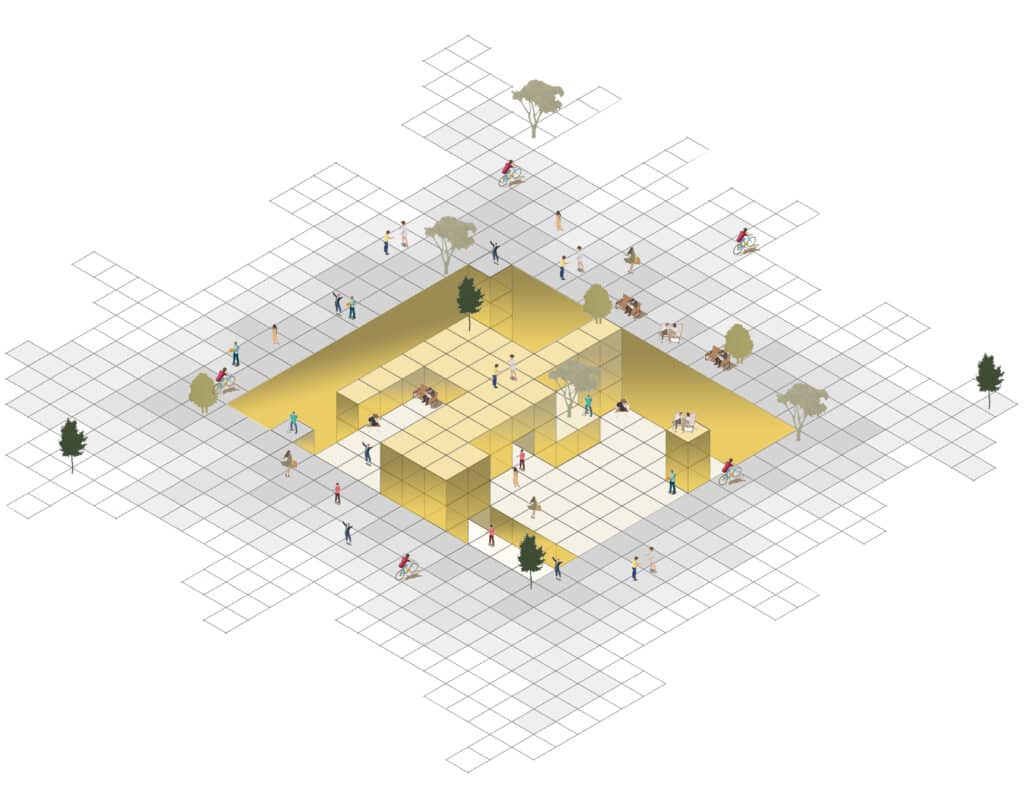Abstract
Assembler Grounds explores a computational approach to site-specific excavation and material reuse, resulting in a subterranean academic and social hub embedded within a residential campus. Using environmental data and generative geometry, the project aligns performance, program, and sustainability in a cohesive design strategy.
Solar radiation analysis informed the strategic placement of light wells and entry voids, ensuring natural light and passive heating in the underground spaces. Excavation was guided by a voxel-based system and optimized through the Assembler tool, producing a spatial network that includes collaborative zones, fabrication labs, and study areas.
A defining sustainable feature is the reuse of excavated soil for rammed earth construction, reducing material waste and enhancing thermal performance. The design demonstrates how computational workflows can integrate environmental responsiveness with architectural expression and material circularity.

Project Brief
This project investigates a computational design approach to environmentally responsive excavation and material reuse, creating an underground social and academic hub for students within a residential campus. By combining environmental analysis and generative geometry, the project integrates performance, program, and material circularity in a cohesive design workflow.
The process began with a solar radiation analysis using Ladybug for Grasshopper, identifying zones on the site with maximum incident solar radiation throughout the year. This data informed the placement of light wells and entry voids, ensuring optimal natural lighting and passive thermal gain for the subterranean spaces, while leaving the most solar-exposed areas undisturbed for surface use or integration with renewable strategies.
Following the analysis, the site was subdivided into a voxel grid of 3x3x3 meter modules, and Assembler was used to generate a patterned excavation—selectively removing voxel chunks based on environmental performance and spatial requirements. The resulting excavated volume shapes a network of underground spaces, housing:
Social gathering areas for collaboration and recreation
Fabrication labs for digital and analog prototyping
A library and quiet zones for study and contemplation
Vertical voids and corridors designed as light wells and passive ventilation shaft
A key sustainability feature of the project is the reuse of excavated soil. Instead of being discarded, the material is repurposed for rammed earth construction, forming the subterranean walls and retaining structures. The design ensures that the volume of excavation is proportional to the material required. This not only reduces carbon footprint but also reinforces the architectural character with natural, site-specific textures and thermal mass benefits.

Sun Incident Radiation Analysis
Pseudo Code
Ladybug Incident Radiation Analysis for Excavation


